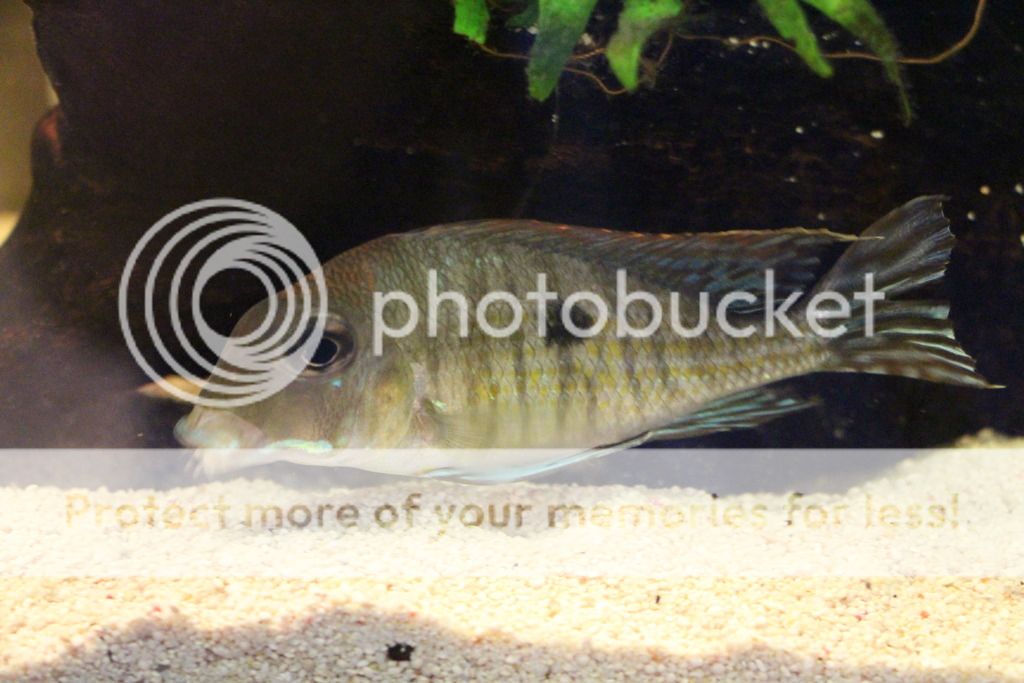I have a group of 6 Geophagus orange head tapajos in my 90g tank. There are 2 male and 4 female. I have kept them for a year now since they arrived at the size of 1.5". The male are growing nicely, with length of 5"+ and showing nice color. However, the problem I now face is that 3 of the female are growing relatively slow. Those three are often chased away by the males once they leave their own territory, so they stay at their corner most of the time.


The first photo shows one of my weak female, which is about 3.5" now, while the second photo shows the same fish with a male. The fish on the top is one of the male, while the bottom one is one of the female. As you can see, it is significantly smaller than the male and is showing the stress bar constantly. I first thought of it as the difference between sex, but one of the female, which is a fixed partner of a male, grow quite nicely and is not chased by the males (apparently with the protection of one of the male).

This picture shows three fish. The first from right is a weaker female, while the second fish is a stronger female. The fish at the back is a male. As you can see, there are a large size difference.
My questions are as follow:
1. Judging from the photo, do you think my weaker female is stressed out?
2. If so, do you think the reduced growth rate and color is a result of the stress?
3. If there is stress, the only source would be the aggression from the males. Is there anything I could do with it? I would prefer to reduce the aggression level of the males or reduce their territory size if it can be done.


The first photo shows one of my weak female, which is about 3.5" now, while the second photo shows the same fish with a male. The fish on the top is one of the male, while the bottom one is one of the female. As you can see, it is significantly smaller than the male and is showing the stress bar constantly. I first thought of it as the difference between sex, but one of the female, which is a fixed partner of a male, grow quite nicely and is not chased by the males (apparently with the protection of one of the male).

This picture shows three fish. The first from right is a weaker female, while the second fish is a stronger female. The fish at the back is a male. As you can see, there are a large size difference.
My questions are as follow:
1. Judging from the photo, do you think my weaker female is stressed out?
2. If so, do you think the reduced growth rate and color is a result of the stress?
3. If there is stress, the only source would be the aggression from the males. Is there anything I could do with it? I would prefer to reduce the aggression level of the males or reduce their territory size if it can be done.


